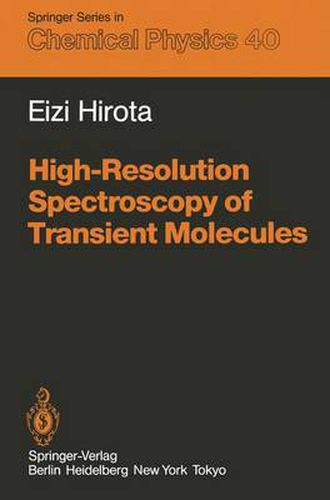Readings Newsletter
Become a Readings Member to make your shopping experience even easier.
Sign in or sign up for free!
You’re not far away from qualifying for FREE standard shipping within Australia
You’ve qualified for FREE standard shipping within Australia
The cart is loading…






This title is printed to order. This book may have been self-published. If so, we cannot guarantee the quality of the content. In the main most books will have gone through the editing process however some may not. We therefore suggest that you be aware of this before ordering this book. If in doubt check either the author or publisher’s details as we are unable to accept any returns unless they are faulty. Please contact us if you have any questions.
It is a great challenge in chemistry to clarify every detail of reaction processes. In older days chemists mixed starting materials in a flask and took the resul tants out of it after a while, leaving all the intermediate steps uncleared as a sort of black box. One had to be content with only changing temperature and pressure to accelerate or decelerate chemical reactions, and there was almost no hope of initiating new reactions. However, a number of new techniques and new methods have been introduced and have provided us with a clue to the examination of the black box of chemical reaction. Flash photolysis, which was invented in the 1950s, is such an example; this method has been combined with high-resolution electronic spectroscopy with photographic recording of the spectra to provide a large amount of precise and detailed data on transient molecules which occur as intermediates during the course of chemical reac tions. In 1960 a fundamentally new light source was devised, i. e. , the laser. When the present author and coworkers started high-resolution spectroscopic stud ies of transient molecules at a new research institute, the Institute for Molecu lar Science in Okazaki in 1975, the time was right to exploit this new light source and its microwave precursor in order to shed light on the black box.
$9.00 standard shipping within Australia
FREE standard shipping within Australia for orders over $100.00
Express & International shipping calculated at checkout
This title is printed to order. This book may have been self-published. If so, we cannot guarantee the quality of the content. In the main most books will have gone through the editing process however some may not. We therefore suggest that you be aware of this before ordering this book. If in doubt check either the author or publisher’s details as we are unable to accept any returns unless they are faulty. Please contact us if you have any questions.
It is a great challenge in chemistry to clarify every detail of reaction processes. In older days chemists mixed starting materials in a flask and took the resul tants out of it after a while, leaving all the intermediate steps uncleared as a sort of black box. One had to be content with only changing temperature and pressure to accelerate or decelerate chemical reactions, and there was almost no hope of initiating new reactions. However, a number of new techniques and new methods have been introduced and have provided us with a clue to the examination of the black box of chemical reaction. Flash photolysis, which was invented in the 1950s, is such an example; this method has been combined with high-resolution electronic spectroscopy with photographic recording of the spectra to provide a large amount of precise and detailed data on transient molecules which occur as intermediates during the course of chemical reac tions. In 1960 a fundamentally new light source was devised, i. e. , the laser. When the present author and coworkers started high-resolution spectroscopic stud ies of transient molecules at a new research institute, the Institute for Molecu lar Science in Okazaki in 1975, the time was right to exploit this new light source and its microwave precursor in order to shed light on the black box.